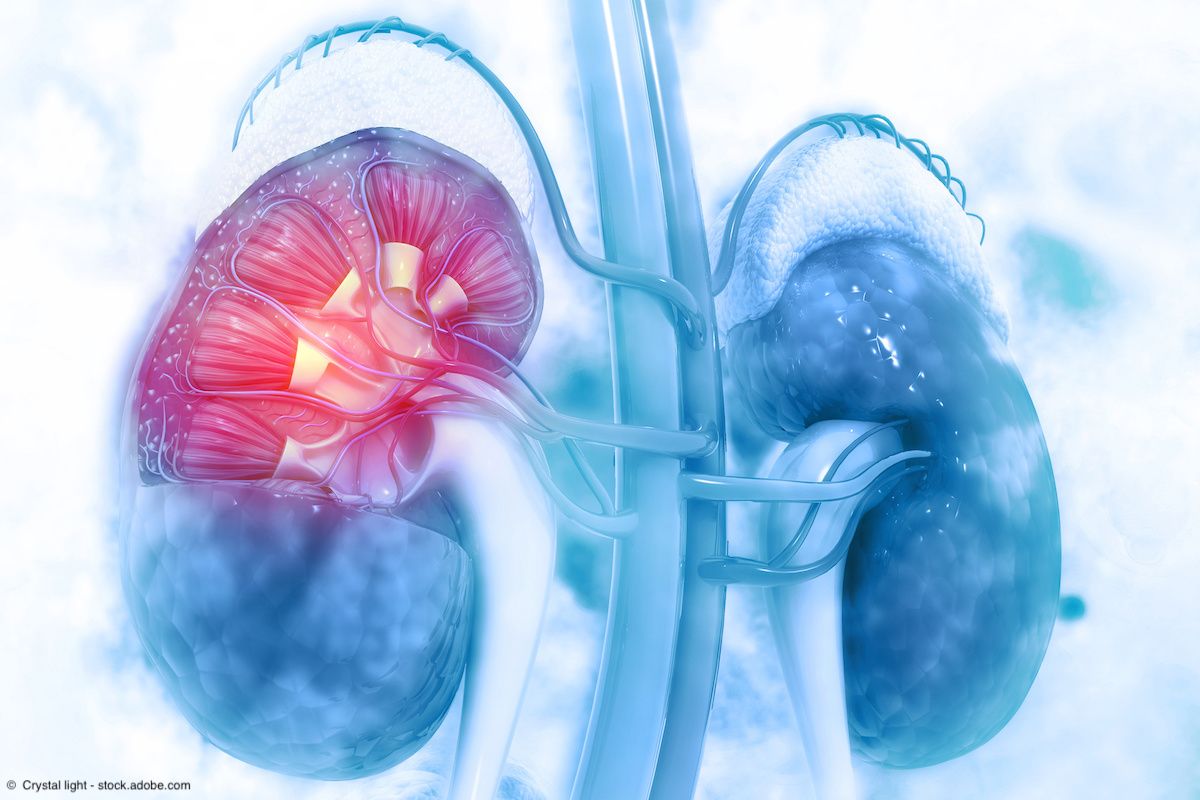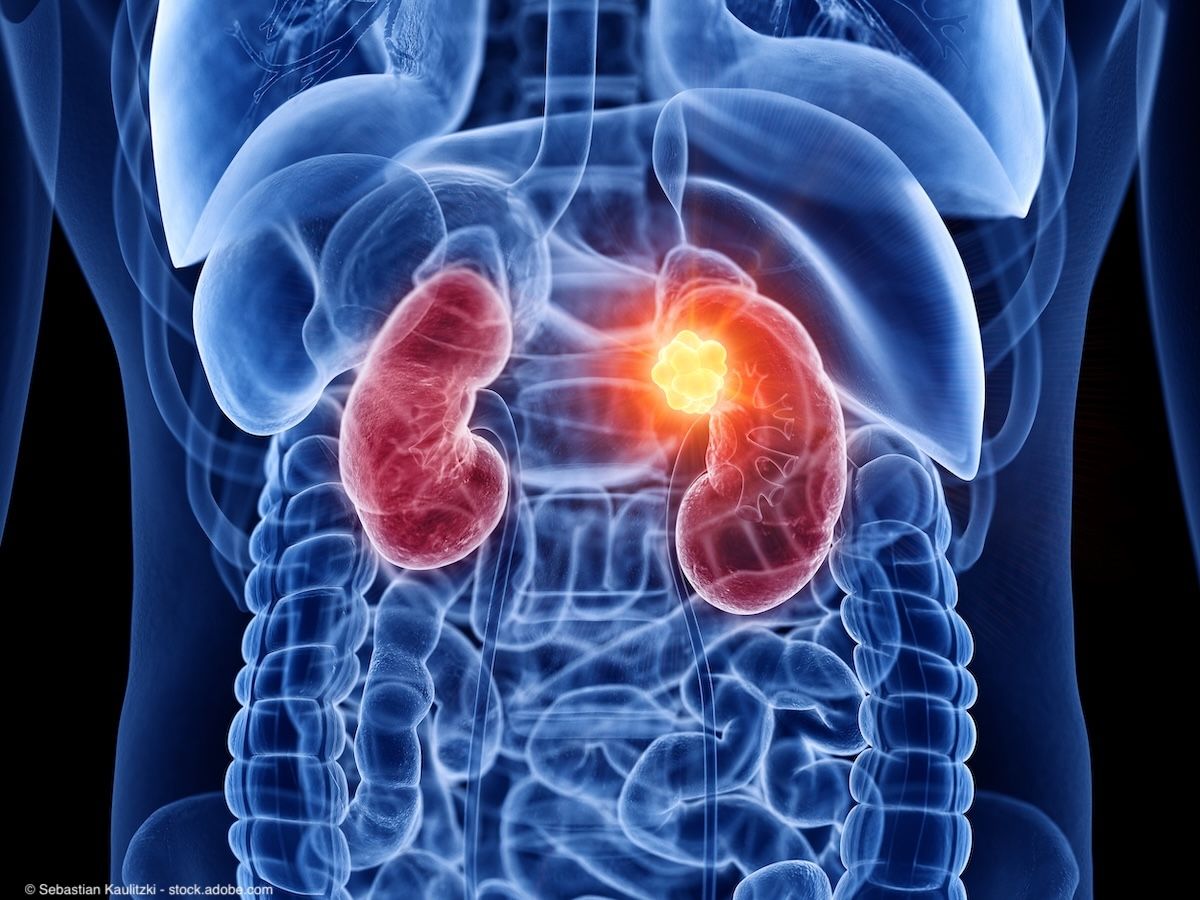News
Article
FDA expert reviews data supporting belzutifan approval for VHL-associated kidney cancer
Author(s):
In a presentation at the 2023 International Kidney Cancer Symposium, Jaleh Fallah, MD, a medical oncologist at the FDA, discussed the agency’s evaluation of data from the phase 2 LITESPARK-004 trial (NCT03401788) that led to the approval of belzutifan (Welireg) for adult patients with von Hippel-Lindau (VHL) disease who require therapy for associated renal cell carcinoma (RCC), central nervous system (CNS) hemangioblastomas, or pancreatic neuroendocrine tumors (pNETs) not requiring immediate surgery.1,2
“A retrospective evaluation of the VHL database at the National Institutes of Health [was conducted] and the median linear growth of RCC tumors was 3.7 mm per year in that study, which is similar to the pretreatment numbers in LITESPARK-004,” said Jaleh Fallah, MD, a medical oncologist at the FDA. “These two analyses provide the supportive evidence that the slowing of RCC tumor growth on LITESPARK-004 was due to the treatment effects of belzutifan and novel spontaneous regression of the tumor itself.”

At a median follow-up of 22 months, patients with RCC (n = 61) treated with belzutifan achieved an objective response rate (ORR) of 49% (95% CI, 36%-62%), which was comprised entirely of partial responses (PRs). The median time to response (TTR) was 8 months (range, 2.7-19.0) and the median duration of response (DOR) was not reached (NR; range, 2.8-22.0). Fifty-six percent of patients who responded to treatment (n = 30) had a DOR of at least 12 months at the data cutoff date of December 1, 2020.
The linear growth rate of tumors before treatment with belzutifan showed an increase of 3.63 mm per year, and after treatment, the rate decreased by 4.48 mm per year.
“A retrospective evaluation of the VHL database at the National Institutes of Health [was conducted] and the median linear growth of RCC tumors was 3.7 mm per year in that study, which is similar to the pretreatment numbers in LITESPARK-004,” Fallah said. “These two analyses provide the supportive evidence that the slowing of RCC tumor growth on LITESPARK-004 was due to the treatment effects of belzutifan and novel spontaneous regression of the tumor itself.”
VHL disease is a rare disease caused by a germline mutation in the VHL gene and manifests with a variety of benign and malignant tumors, including pNETs, pheochromocytoma/paraganglioma, CNS hemangioblastoma, and retinal hemangioblastoma. Additional benign VHL disease tumors also encompass pancreatic cysts/cystadenomas, endolymphatic sac tumors, epididymal cysts, and broad ligament cysts.
“RCC develops in up to 70% of patients with VHL disease and the risk of metastasis is correlated with the tumor size,” Fallah explained. “To prevent metastasis, surgery is recommended for RCC tumors [that are] 3 cm and larger.”
LITESPARK-004
The single-arm LITESPARK-004 trial enrolled patients with VHL disease–associated RCC who had a germline VHL mutation, at least 1 measurable solid tumor in the kidney, and no metastasis. Histologic confirmation was not required. Those with disease that was 3.0 cm or greater and required immediate surgery were excluded from the study. Patients received oral belzutifan at 120 mg daily.
A protocol amendment after enrollment added a retrospective independent radiologic committee (IRC) review of existing images for non-RCC tumors such as pNETs and the secondary end point of ORR in non-RCC tumors. The primary end point of the study was ORR in VHL disease–associated RCC by RECIST v1.1 criteria and IRC assessment. Tumor assessments occurred every 12 weeks.
CNS Hemangioblastoma and pNETs
Patients with CNS hemangioblastoma (n = 24) treated with belzutifan experienced an ORR of 63% (95% CI, 41%-81%), which included 1 patient (4%) with a complete response (CR) and 14 patients (58%) with PRs. In this group, the median TTR was 3.1 months (range, 2.5-11.0) and the median DOR was NR (range, 4-22). Seventy-three percent of responders had a response lasting at least 12 months.
The original retrospective review of CNS images by IRC identified 50 patients with CNS hemangioblastoma at baseline; however, following a requested re-review of images excluding cysts and edema from measurements, only 24 patients were identified as having a measurable solid lesion in the CNS.
These same images were also used for measurements of pancreatic lesions, but Fallah noted that, “the images were not optimized for detection of pNETs on a number of parameters, including contrast, timing, and slice thickness. This led to a high level of discordance in diagnosis.”
In the new drug application submission, 22 patients had pNETs per IRC assessment, but after adjudication it was revealed that only 12 patients had pNETs at baseline as determined by at least 2 blinded radiologists. The ORR among these 12 patients who received belzutifan was 83% (95% CI, 52%-98%), and this included 2 CRs (17%) and 8 PRs (67%). The median TTR was 8.0 months (range, 2.7-11.0) and the median DOR was NR (range, 11.0-19.0). Half of responders had a response that lasted for at least 12 months.
When assessing retinal hemangioblastoma, investigators consulted the FDA’s Division of Ophthalmology who evaluated the 28 retinal images available. They concluded that 5 eyes with retinal hemangioblastoma at baseline appeared to have an improvement in lesion size per IRC assessment without potentially confounding circumstances. Efficacy could not be assessed in the remaining 23 eyes because 13 eyes had no lesions at baseline, 1 eye had no light perception at baseline, 7 eyes had laser treatment which may have resulted in lesion improvement, and 2 eyes did not have laser treatment and were already showing fibrosis.
Additional Tumors
Results revealed that reduction in sizes of lesions were seen in pancreatic cysts/cystadenomas with VHL disease, but the interpretation of the data was limited as a result of high discordance between investigators and IRC assessment in diagnosis at baseline. Further, there was potential for spontaneous regression and resolution of lesions.
All 3 patients with pheochromocytoma experienced stable disease (SD) per investigator assessment and 1 patient with an endolymphatic sac tumor achieved SD, as well. Among those with epididymal cystadenomas (n = 10), investigators determined that 2 patients experienced improvement in lesion size and 8 patients experienced SD.
Safety in LITESPARK-004
No fatal adverse effects (AEs) were observed in the safety population (n = 61), although investigators noted 1 patient died of a fentanyl overdose. Serious AEs occurred in 15% of patients and included anemia, hypoxia, anaphylaxis reaction, retinal detachment, and central retinal vein occlusion. Additionally, 2 patients discontinued the trial due to AEs in the form of dizziness (n = 1) and opioid overdose (n = 1).
The most common AEs experienced by at least 25% of patients were anemia, fatigue, increased creatinine, headache, dizziness, increased glucose, and nausea. Anemia occurred in 90% of patients at any grade and in 7% of patients at grade 3 or 4. Fallah also noted that 1 patient experienced grade 3 hypoxia.
Belzutifan also has a boxed warning for embryo fetal toxicity and drug-drug interaction with the agent may make certain hormonal contraceptives ineffective.
FDA Considerations
Decision making following the LITESPARK-004 study should consider that the study evaluated a rare disease in an early nonmetastatic setting and that randomized trials assessing time to event end points in each tumor are challenging to conduct. The FDA also noted that morbidities are correlated with tumor size and that investigators understood the biology of the HIF2α pathway across different VHL disease–associated tumors when conducting the study.
Fallah also explained that patients with VHL disease are young—the median age was 41 years (range, 19-66) on LITESPARK-004, and exposure to the agent is long—the median duration of exposure was 16 months (range, 2-24).
“With these considerations, the FDA concluded that there was a favorable benefit-risk profile for belzutifan in VHL disease–associated RCC, CNS hemangioblastomas, and pNETs,” Fallah said. “The magnitude of response and likelihood for symptom improvement, long DOR, biologic rationale, [and] rare tumor type allowed for granting a traditional approval. For other VHL tumors, the data are not adequate for approval and those tumors will be further assessed.”
Moreover, managing anemia for patients receiving belzutifan can be done with an erythropoietin-stimulating agent (ESA) and/or blood transfusions and dose interruptions or reductions. However, ESAs can increase the risk of death, tumor progression or recurrence, myocardial infarction, stroke, and venous thromboembolism, and data from LITESPARK-004 on ESA use was limited.
“In the dose-modification section of the label, we recommended blood transfusion instead of [an] ESA [as] the safety of ESA use in this setting has not been established,” Fallah concluded. “Also, we recommended a higher [than routine] hemoglobin threshold of 9.0 for dose interruption and dose reduction to reduce the potential need for blood transfusion. In addition, a post-marketing requirement was issued for longer follow-up of safety on LITESPARK-004, which will provide additional data on safety of ESA use in this setting.”
References
1. FDA approves belzutifan for cancers associated with von Hippel-Lindau disease. FDA. February 1, 2022. Accessed November 10, 2023. https://www.fda.gov/drugs/resources-information-approved-drugs/fda-approves-belzutifan-cancers-associated-von-hippel-lindau-disease
2. Fallah, J. FDA evaluation of data and approval for belzutifan. Presented at: 2023 International Kidney Cancer Symposium; November 9-11, 2023; Nashville, TN.
Newsletter
Stay current with the latest urology news and practice-changing insights — sign up now for the essential updates every urologist needs.

















